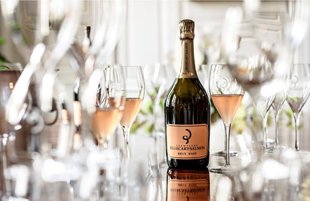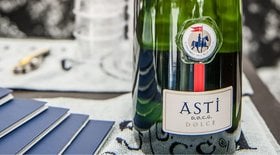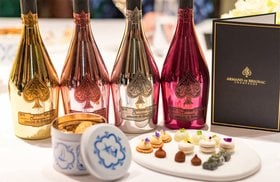Billecart Salmon Champagne: Winemaking, Best Wines (2025)
The 200-year old Billecart Salmon Champagne house has never failed to impress wine drinkers and critics - thanks to consistent innovations in winemaking and the impressive lineup of cuvees!
Interestingly, the 1959 Billecart-Salmon Cuvee Nicolas François was named “Champagne of the Millennium” by a jury of experts at a 3-day blind tasting in Stockholm in 1999 (outshining Dom Perignon, Ruinart and Krug.)
So, what makes these Champagnes stand out from the rest?Which Billecart Salmon bottles should you not miss in 2024?
Let’s dive into the history, vineyards and winemaking practices of this relatively small Champagne house. We’ll explore its cuvees, investment potential and also the easiest way to buy the wine bottles.
Further reading
- Explore the most profitable ways to Invest in Wine with this comprehensive guide.
- Discover the exceptional wines of Bordeaux’s Chateau Margaux and Chateau Mouton Rothschild. Also check out the long-lived Sauternes wine of Château d'Yquem.
The Billecart Salmon Champagne House

The Billecart Salmon Champagne House is situated in Mareuil-sur-Aÿ, France, and is one of the few Champagne houses that are still family-owned.
This distinguished winery makes Champagne from Pinot Noir, Chardonnay, and Pinot Meunier grapes sourced from its own vineyard and over 300 hectares of grower vines.
Unlike many Champagne houses, Billecart Salmon is well-known for favoring Pinot Meunier in its blends. In fact, its flagship wine, Brut Rose Champagne has close to 30% Pinot Meunier.
Billecart Salmon has a diverse range of Champagnes in its stable. At the top of this list is the exclusive cuvee Le Clos Saint Hilaire and the Cuvee Nicolas-François Billecart.
Let’s take a look at the history of this Champagne house.
200 Years of Billecart Salmon: A Quick Look

The tale of the Billecart Salmon Champagne house unfolds with Nicolas François Billecart and Elisabeth Salmon’s marriage in 1818. They began making Champagnes with the help of winemaker and Elisabeth’s brother, Louis.
Here are some of the milestones of the venerable Billecart family Champagne house:
1958: Inspired by breweries, Jean Roland-Billecart introduced the cold fermentation and cold settling method that produced the great finesse and freshness that characterizes the Billecart Salmon house style.
1964: The first vintage of Cuvee Nicolas Francois was made to honor the founder.
1970: Jean Roland-Billecart created the unique Billecart Brut Rosé wine - the producer's nonvintage cuvee.
1995: The remarkable Le Clos Saint Hilaire cuvee was created.
2018: Billecart Salmon celebrated two centuries of existence with the limited edition ‘Cuvee 200’. Only 1818 magnums were made available worldwide.
In 2020, Champagne Billecart-Salmon launched their Les Rendez-Vous de Billecart-Salmon — a series that would feature very small bottlings of one-of-a-kind experimental results. This series began with the No.1 Meunier Extra Brut.
Today, the Billecart Salmon Champagne House is headed by the 7th generation family member, Mathieu Roland-Billecart.
Now, let’s explore the Billecart Salmon vineyards and the fine terroir.
The Vineyards of Billecart Salmon

Billecart Salmon obtains their wine grapes from 14 hectares of House-owned vines and grower vines from 40 crus across Champagne (mostly around Epernay.)
The Pinot Noir, Chardonnay and Pinot Meunier grapes come from the expressive Grand Cru terroir of Montagne de Reims, Vallée de la Marne and the Côte des Blancs.
Billecart Salmon practices some biodynamic principles in the vineyard, avoiding pesticides and herbicides.
Yields are kept low to improve the grape quality, and harvest tends to be earlier. The House’s philosophy is that early harvest yields a more delicate and elegant Champagne.
Total production is capped at 2.5 million bottles annually.
Now, the crown of Billecart Salmon’s vineyard real estate is the single parcel Le Clos Saint Hilaire.
This vineyard is planted exclusively with Pinot Noir vines. The one-hectare of Pinot Noir vines is enclosed within a stone wall and is ploughed by horses. The fruit is used to make the vintage Clos Saint-Hilaire Champagne, which is limited to 3,500-5,500 individually numbered bottles per year.
Unique Winemaking Practices at Billecart Salmon
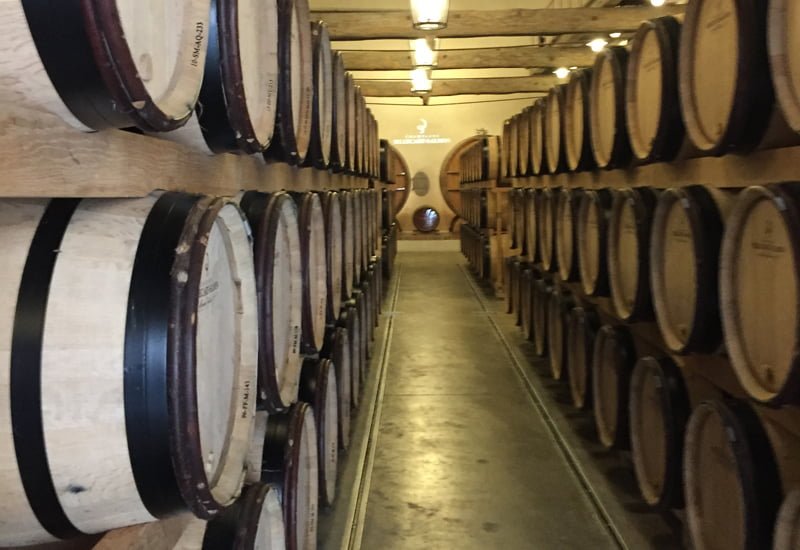
Billecart Salmon employs a unique winemaking method involving cold settling and cold fermentation taking inspiration from breweries. This takes place over three weeks to a month - much longer than other producers, and a first among Champagne makers.
- Cold Settling: In the 1950s, Billecart Salmon established a cold settling technique using stainless steel tanks where the pressed juice undergoes a primary cold settling for about 12 hours to allow the heaviest must solids to sink to the bottom.
The must is then racked into clean tanks and chilled for another 48 hours. The second settling is colder (down to 2ºC), eliminating wild yeasts and other heavy elements without using enzymes, filtering or a centrifuge.
- Fermentation: The must then undergoes a cold, slow fermentation (just under 13ºC) of about 30 days in oak casks or steel tanks. Billecart Salmon has more than 400 small and 24 large oak casks for vinification.
Each parcel is vinified individually by cru and by grape variety to allow traceability.
The low fermentation temperature helps preserve subtle fruit aromas and the great finesse that these Champagnes are known for.
- Aging: The wines are bottle-aged in 17th century underground chalk cellars for nearly a decade before release.
Another interesting aspect of winemaking is the very low dosage used after disgorgement - under 6g/l, equivalent to Extra Brut dosages.
Now let’s explore the best selection of Billecart Salmon Champagnes that you could buy.
Billecart Salmon Cuvees and Best Bottles to Buy in 2024
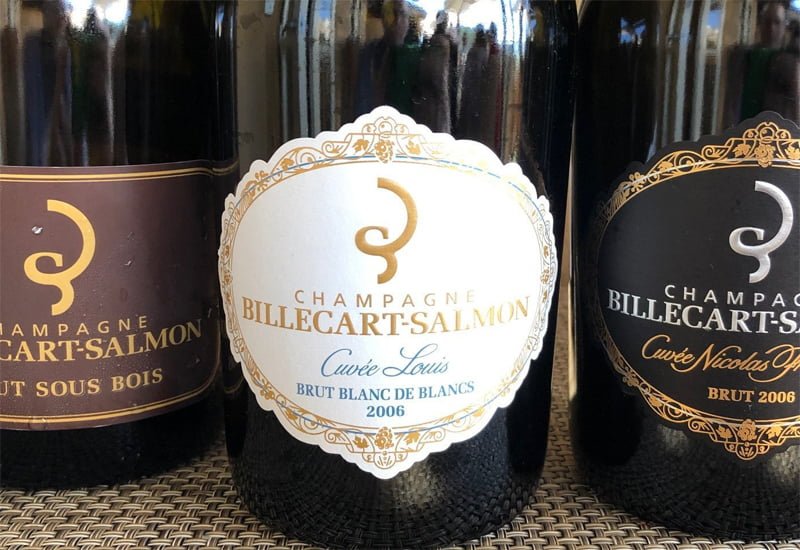
Here’s a deeper look at the cuvees or wine styles and an exciting lineup of bottles from this producer.
1. Le Clos Saint-Hilaire
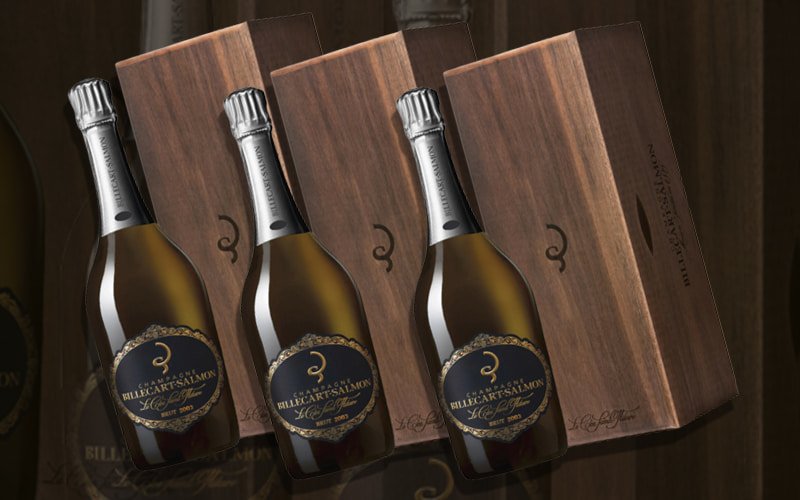
As the name suggests, this Champagne comes from the prized Le Clos Saint-Hilaire vineyard.
This complex Blanc de Noirs Champagne is made from 100% Pinot Noir vinified in oak casks. It’s aged for 14 years on lees and can age more than 10 years post-release.
It has the aroma of candied citrus fruit, crushed hazelnut and almonds. You’ll be delighted with the appealing flavors of roasted pineapples with buckwheat with hints of fresh pear and quince in syrup.
The finest Le Clos Saint-Hilaire Champagne for you:
- 2003 Billecart Salmon 'Le Clos Saint Hilaire' Blanc de Noirs Brut (Price: $460+)
- 1996 Billecart Salmon 'Le Clos Saint Hilaire' Blanc de Noirs Brut 1996 (Price: $540+)
2. Cuvee Nicolas Francois
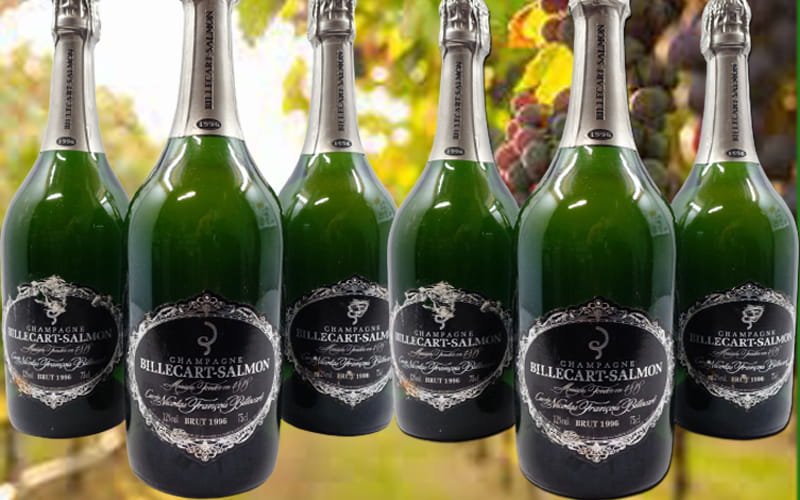
This exceptional cuvee is a fine blend of Grand Cru and Premier Cru grapes — typically 60% Chardonnay from Côte de Blancs and 40% Pinot Noir from Montagne de Reims.
It undergoes partial malolactic fermentation, is aged 10 years on the lees, and can potentially age more than 10 years after release.
The Cuvee Nicolas Francois is a generous wine, with joyful aromas of peach, apple tart and red fruit. It has refreshing yet complex flavors of orchard and stone fruits.
Add these fine bottles of vintage Champagne to your collection:
- 2007 Billecart Salmon 'Cuvee Nicolas-Francois Billecart' (Price: $150+)
- 1996 Billecart Salmon 'Cuvee Nicolas-Francois Billecart' (Price: $320+)
3. Cuvee Elisabeth Salmon

This Brut Rose Champagne was created in 1988 as a tribute to co-founder Elisabeth Salmon.
This cuvee is a subtle wine made of 50% Pinot Noir from Montagne de Reims and the Grande Vallée de la Marne, and 50% Chardonnay from Côte de Blancs. (50% Chardonnay is an unusually high amount for a Rose!)
No more than 10% of the Pinot Noir is vinified as a still red wine. This comes from the fruit of old vines cultivated in the Valofroy vineyard of Mareuil-sur-Aÿ.
The Rose has the aroma of citrus peel and antique roses, with a harmonious palate of blood orange, mandarin and apple tart.
Exquisite vintage Rosé to consider:
- 2007 Billecart Salmon 'Cuvee Elisabeth Salmon' Brut Rosé (Price: $230+)
2002 Billecart Salmon 'Cuvee Elisabeth Salmon' Brut Rosé
(Price: $260+)
4. Cuvee Louis Salmon
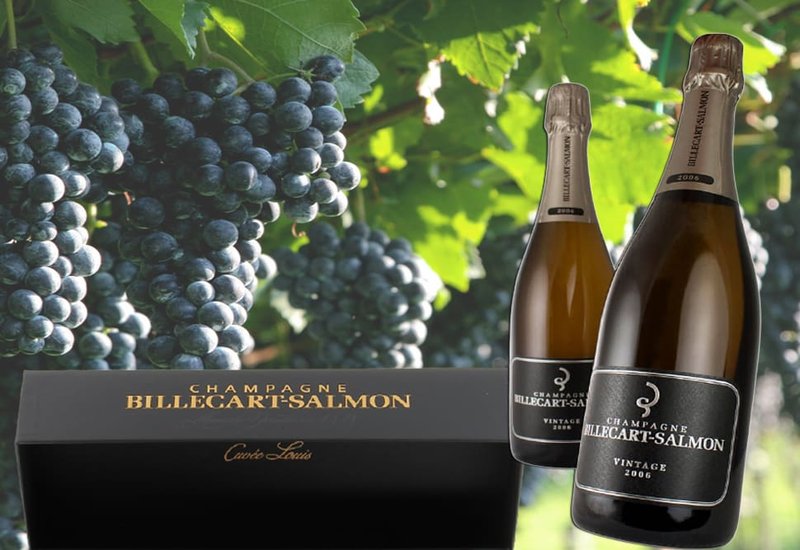
The Cuvee Louis Salmon is a Blanc de Blancs Champagne, made with Chardonnay from the best Grand Cru parcels in Côte des Blancs.
It’s 50% vinified in oak casks and undergoes partial malolactic fermentation. It can age for more than 10 years after release.
This elegant sparkling wine displays the mineral character of Chardonnay, with the aroma of bergamot and fresh pineapple. The palate is creamy and tactile, tasting of citron zest, peach fruit and pepper.
Delectable bottles of Blanc de Blanc:
- 2007 Billecart Salmon Cuvee Louis Blanc de Blancs Millesime (Price: $190+)
2006 Billecart Salmon Cuvee Louis Blanc de Blancs Millesime
(Price: $170+)
5. Champagne Brut Rosé

This flagship nonvintage Rose Champagne is a fascinating blend of 40% Chardonnay, 30% Pinot Meunier and 30% Pinot Noir. Vinified in stainless steel, it undergoes malolactic fermentation and comprises about 40% reserve wine.
Post-release aging potential typically depends on bottling format, with 2-4 years for the standard bottle and up to 8 years for the larger magnums or jeroboam.
It has mouthwatering acidity and appealing flavors of raspberry, sliced strawberries, orange peel, and honeysuckle. You may even detect bitter cherry flavors. This Champagne makes a wonderful aperitif!
Don’t miss out on the distinct red fruit flavors of this wine:
Billecart Salmon Brut Rosé (Price: $80+)
6. Champagne Brut Réserve
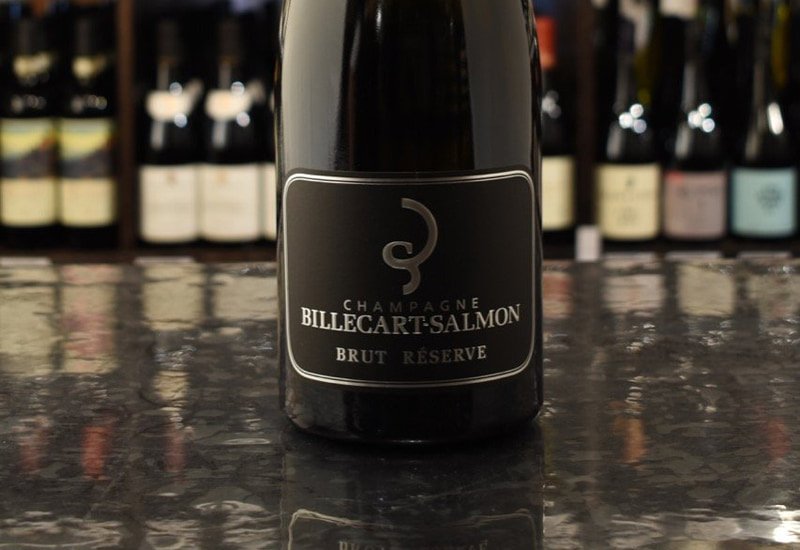
The Brut Réserve is a light, subtle blend of 40% Pinot Meunier, 30% Pinot Noir and 30% Chardonnay.
Malolactic fermentation and vinification is done in stainless steel tanks. This Champagne comprises 50-60% reserve wine and is aged for 30 months on the lees.
Aging after release depends on the bottling format, with 2-4 years for the standard bottle, 1-2 years for a half bottle, and up to 8 years for magnums or jeroboams.
The graceful Billecart Salmon Brut Reserve displays joyful aromas of ripe pear, orange peel, and apple blossom. The plentiful, persistent mousse combines with a full, defined palate of red fruit balanced by a ripe acidity (a mouthwatering acidity!) and finishes off with pale earthiness.
Have a bottle of this elegant Brut Reserve:
Billecart Salmon Brut Reserve (Price: $50+)
7. Other Billecart Salmon Cuvees
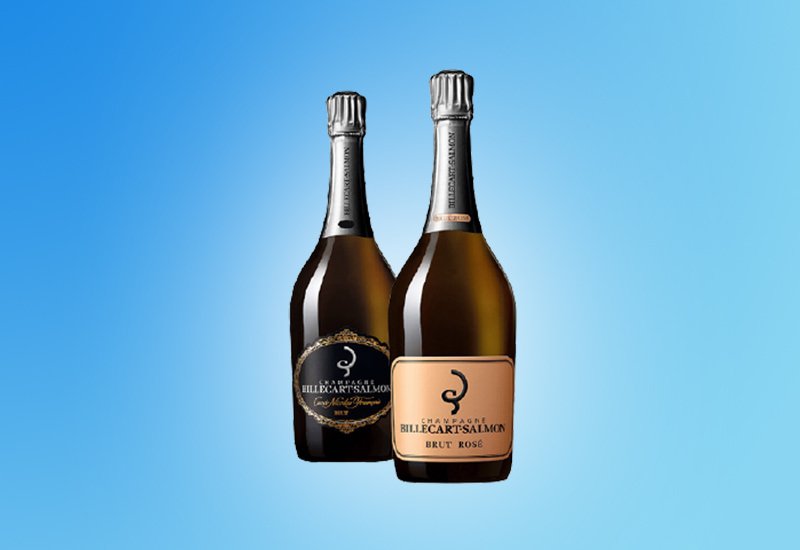
Billecart Salmon has produced several limited edition cuvees over the years:
Champagne Blanc De Blancs Grand Cru:
Made of 100% Chardonnay from the Côte des Blancs Grand Crus. This sparkling wine has buttered brioche notes and an elegant minerality.
- Champagne Brut Nature: This is a blend of 30% Pinot Noir, 30% Chardonnay, and 40% Pinot Meunier with no sugar added to the dosage. It has lovely notes of brioche and dried fruit.
- Champagne Brut Sous Bois: This unique cuvee is vinified in 100% oak and made of the three main Champagne grape varietals. Tasting notes for the Brut Sous Bois include grilled brioche, sliced strawberries, and fresh citrus.
- Champagne Vintage: Pinot Noir flavors dominate this blend of Grand Cru and Premier Cru grapes.
- Champagne Demi-sec: The Demi-Sec blend is similar to the Brut Réserve but with a much higher dosage. Tasting notes include buttered brioche and white flowers.
- N°1 Meunier Extra Brut: This is the first release in the Les Rendezvous de Billecart Salmon series, and is 100% Pinot Meunier. It has a fine, persistent mousse with hints of ripe pear and a pale earthiness.
Some unique cuvees you may want to collect:
- Billecart Salmon 'Cuvee 200' - this 200th Anniversary cuvee (1818-2018) is only available in magnum bottles: (Price: $700+)
- Billecart Salmon Cuvee Columbus Brut (Price: $1220+)
- 1989 Billecart Salmon Grande Cuvee Brut Millesime (Price: $420+)
Now let's look at the investment potential in Billecart Salmon bottles.
Investing in Billecart Salmon Champagne
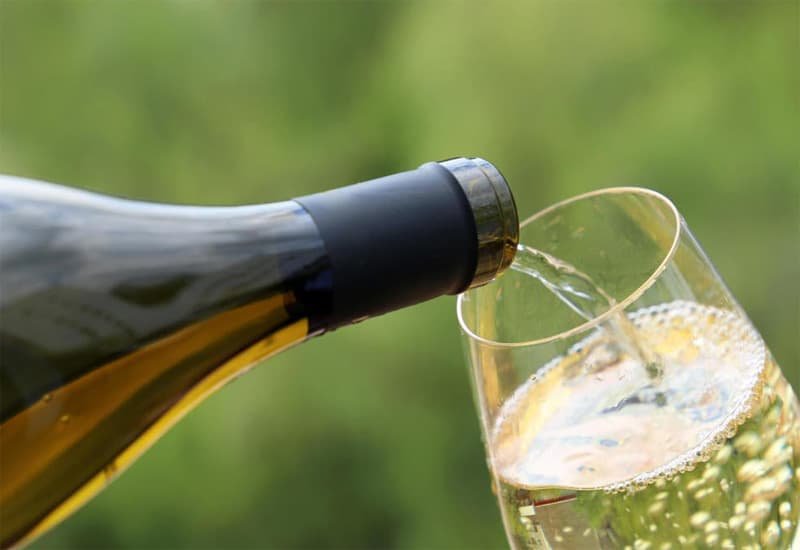
Billecart Salmon wines are comparable to the likes of Krug and Dom Perignon but with prices that tend to be much more approachable.
The 2002 vintage is currently priced at $190+, the 1996 at $310+, and the 2006 vintage is available at $160+. This makes the 2006 Cuvee Nicolas Francois a considerable bargain, especially compared to the same vintages from other producers. For example, the 2006 Dom Perignon Oenotheque costs $620+, and the 2006 Dom Ruinart Blanc de Blancs Brut is priced at $180+.
Let’s look at one of its most highly-regarded cuvees, the vintage Nicolas François Champagne. Each of the 2006, 2002 and 1996 vintages scored 95+ from critics like Robert Parker, and websites like Wine Enthusiast and Wine Spectator.
Previous vintages like the 2002, 2000, 1999, 1998 and 1996 have shown a return of around 8% annually on average.
So, approachable pricing and a long aging potential places Billecart Salmon’s top cuvees in an interesting spot for investors to consider.
So, what’s the best way to obtain these fascinating, sought-afterChampagne cuvees?
You could take the online wine merchant, wine store, or the wine auction route. This will involve researching prices and verifying provenance, not to mention shipping, insurance, and storage. Or you could easily get Vinovest to help you.
Buy Elegant Billecart Salmon Champagnes Through Vinovest
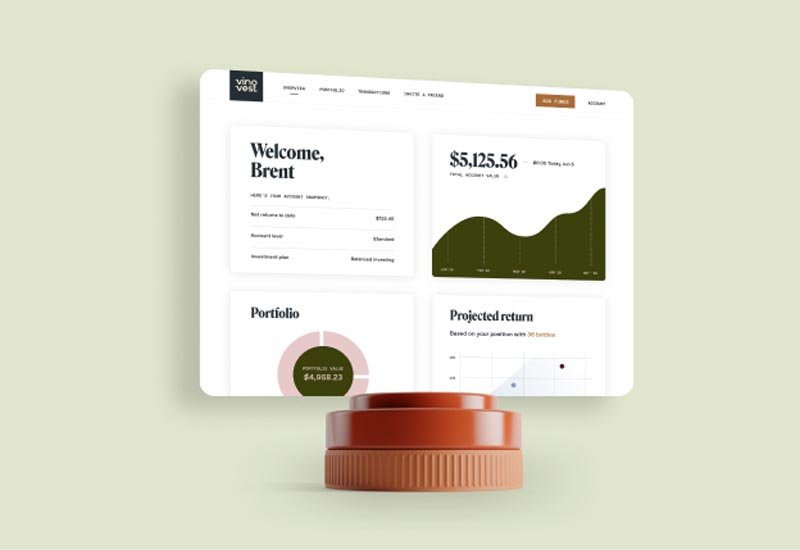
Vinovest is an online wine investment company providing a safe and easy way to invest in exceptional wines from any part of the world.
Want more than just Billecart Salmon Champagne?
You can easily buy a Veuve Clicquot, a Champagne Ruinart, or any other wine to adorn your Champagne collection or for drinking too!
How it works
Follow these four easy steps :
- Sign up
- Fill a quick questionnaire to let Vinovest know your investment preferences and risk appetite.
- Fund your account (a minimum of $1,000).
- View and track your online wine portfolio.
The Benefits
Here are eight reasons why buying through Vinovest is a smart idea:
1. Easy buying and selling
Vinovest’s Artificial Intelligence (AI)-based online platform helps you buy and sell exclusive, rare red wine, white wine, and any other bottle with just a few clicks.
2. Professionally-curated portfolio
A professional team of Master Sommeliers and data scientists oversees the selection of wines that go into your investment portfolios.
3. Provenance and authenticity review
Vinovest authenticates your wine bottles and traces their provenance.
4. Low Overall Costs
Vinovest charges lower fees compared to most wine investment companies. A 2.85% annual fee is applicable (reduced to 2.5% for portfolios of above $50,000). This fee includes wine purchases, selling, storage, insurance, fraud detection, and portfolio management.
5. Insurance coverage
Vinovest offers a full insurance policy at market value, covering each bottle against loss, breakage, and theft.
6. Optimal storage with 24-hour security
Your wines are secured in bonded warehouses located near some of the best wine regions in the world. They are kept in optimal storage conditions with 24/7 monitoring, and power backups ensure conditions are maintained in emergencies.
7. Ownership
Any wine you purchase through Vinovest is 100% yours.
8. Easy delivery
Vinovest delivers your wines to your doorstep or your buyer’s whenever you want to.
Timeless Freshness of a Billecart Salmon Champagne!
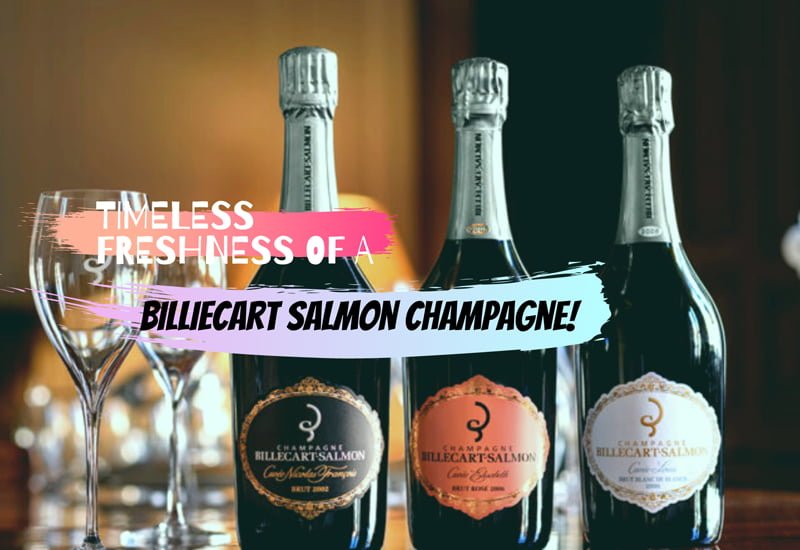
The finesse, freshness and brightness in the Billecart Salmon Champagne house wines are instantly recognizable. They produce some of the finest expressions of Chardonnay, Pinot Meunier and Pinot Noir that have earned quite a devoted following.
There’s no reason not to add this producer to your Champagne collection. So, why not sign up with Vinovest today and kickstart your wine portfolio.
